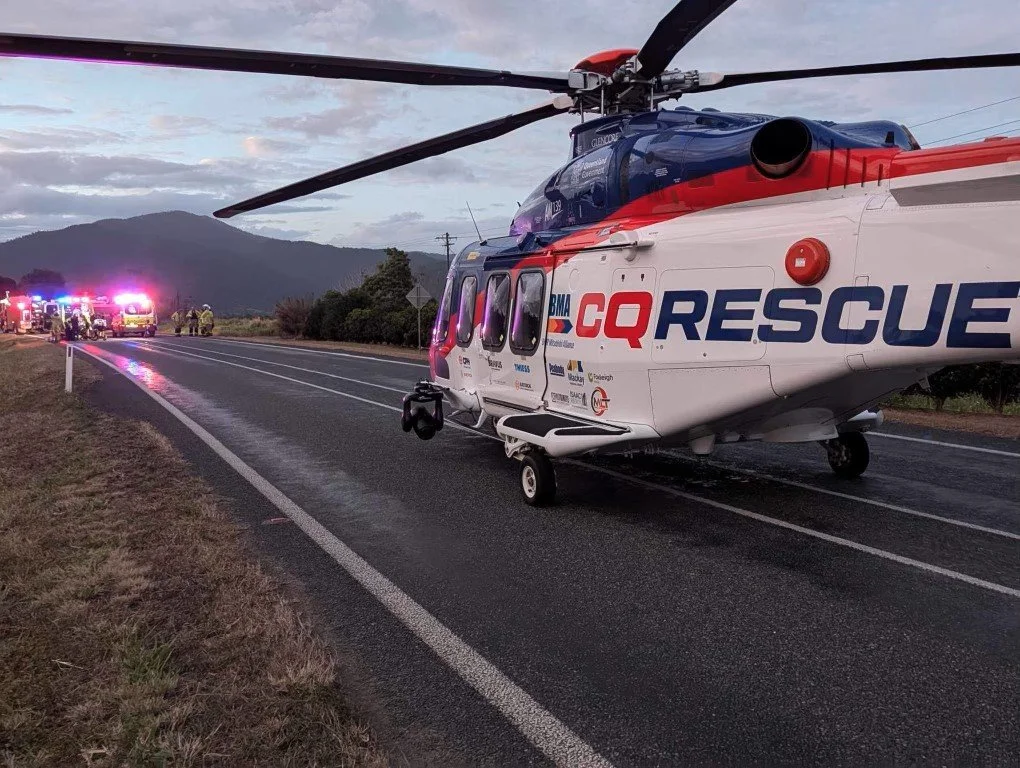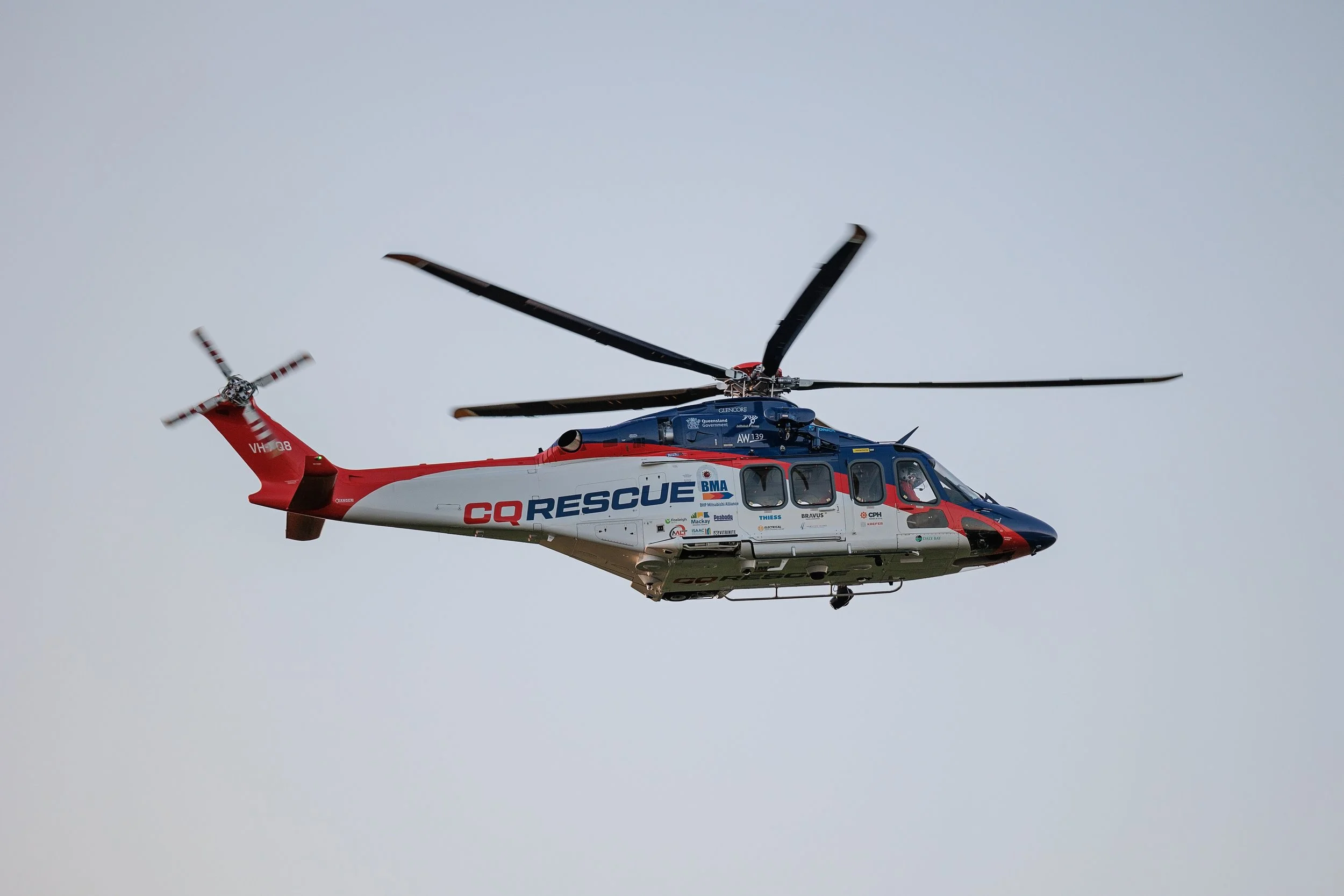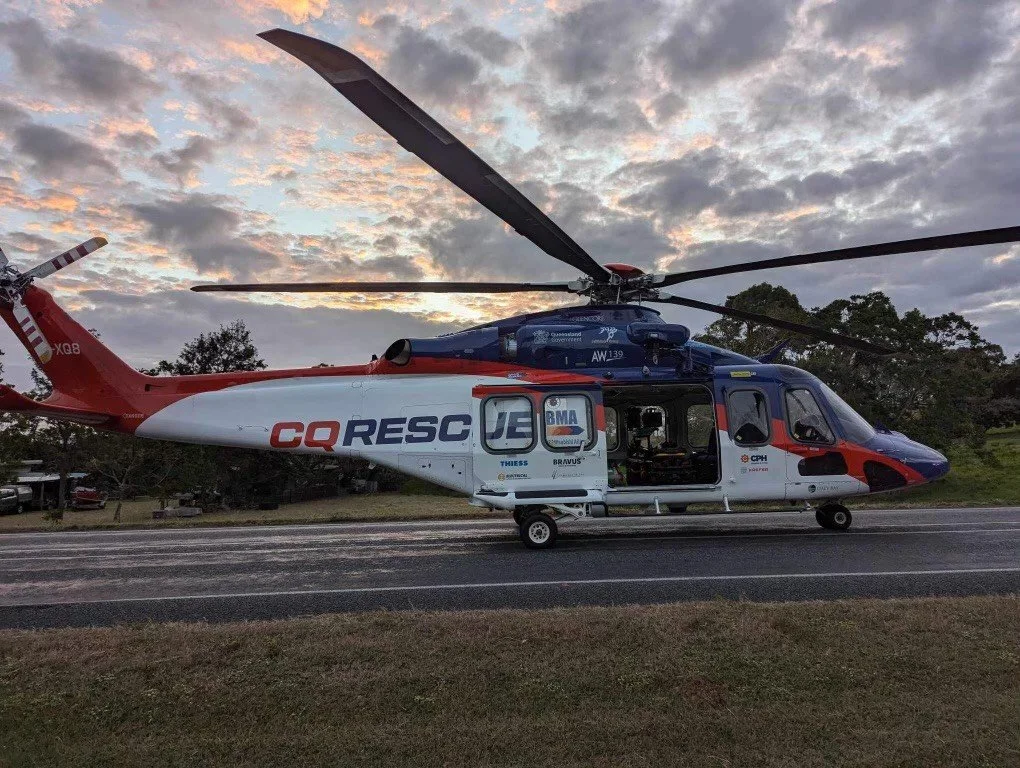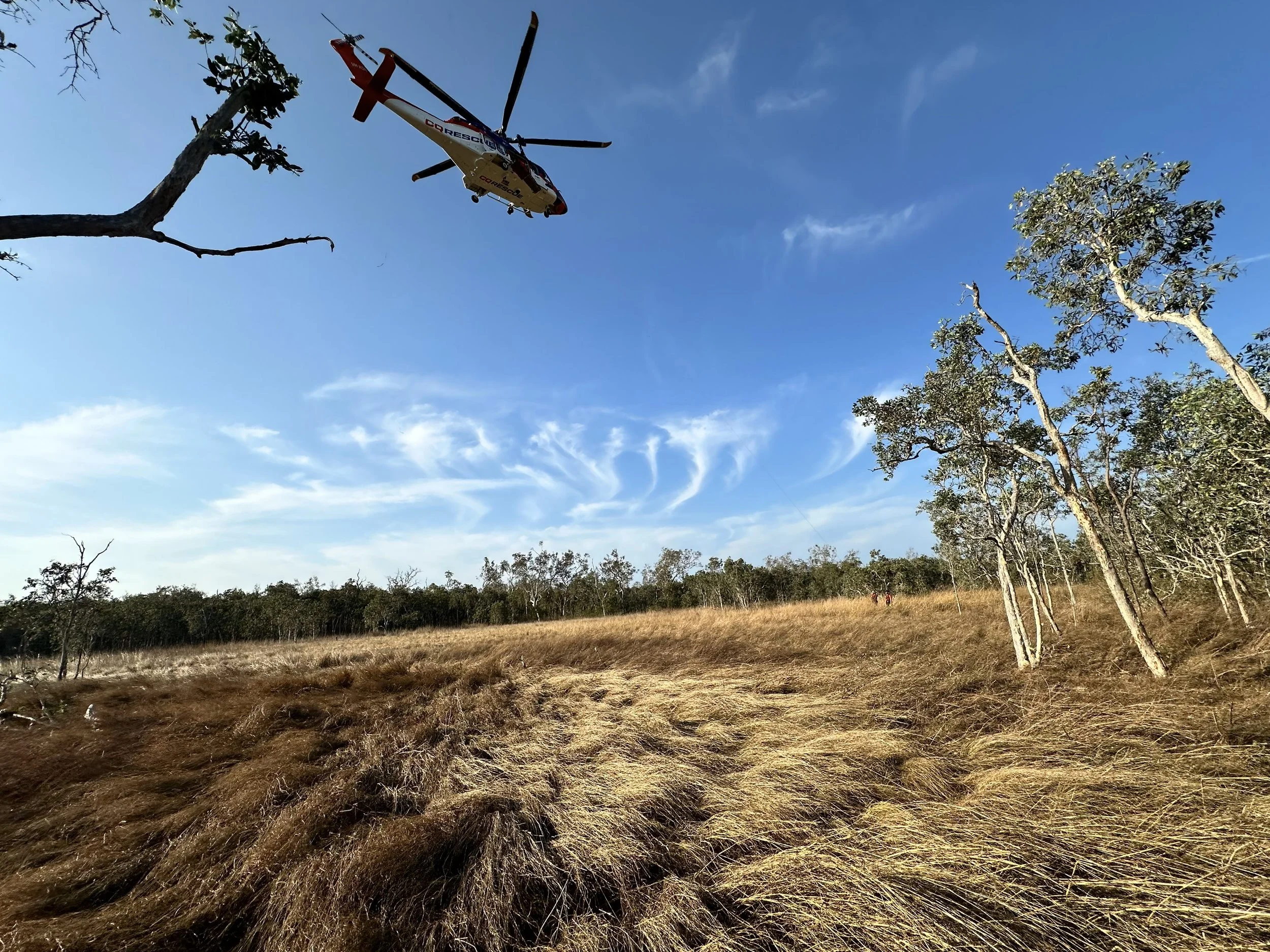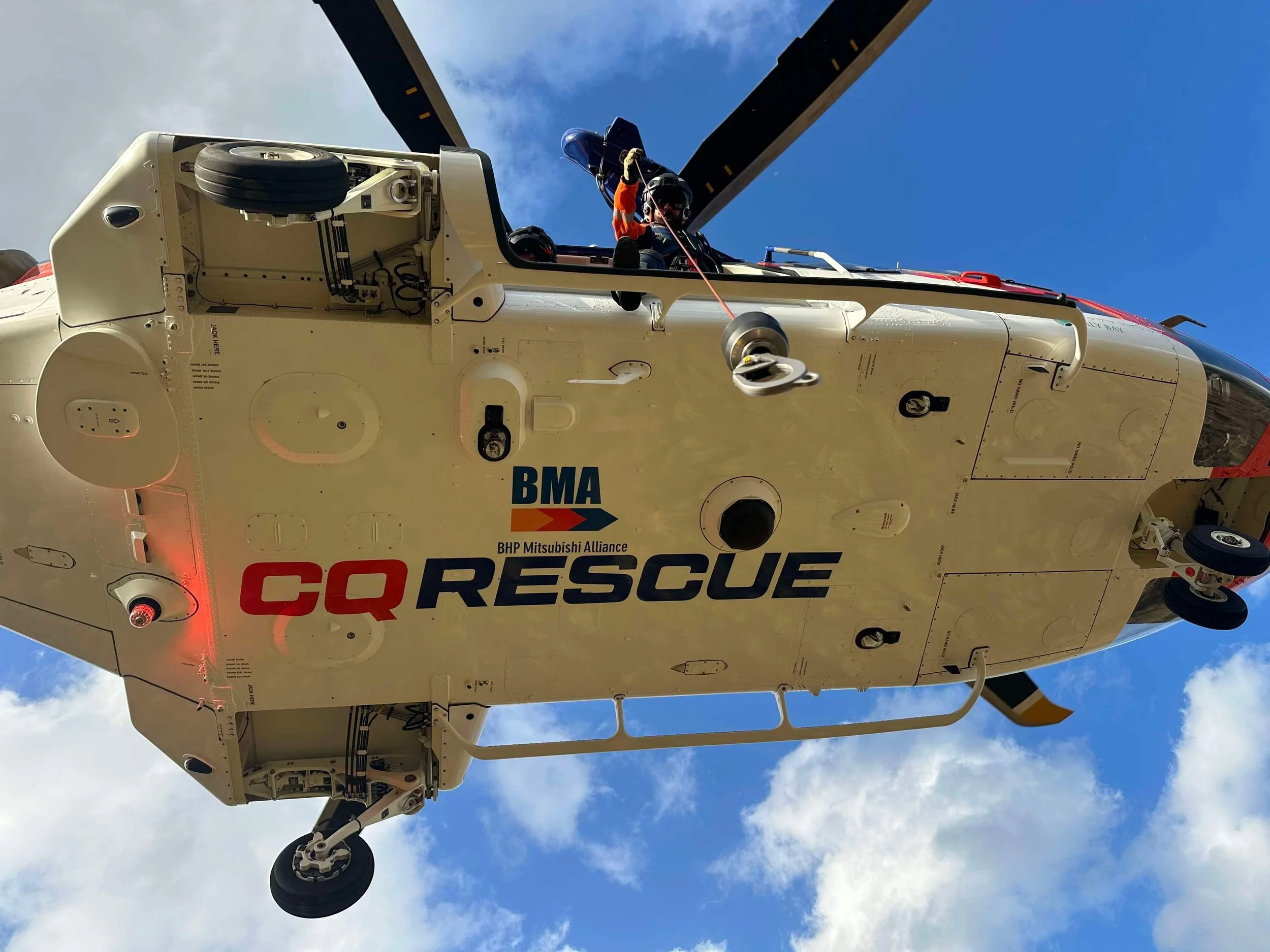Lifesaving missions powered by AW139 Helicopters
Located at our Mackay hangar, BMA CQ Rescue operates two AW139 helicopters – a primary and a backup – equipped with advanced technology and enhanced capabilities.
These twin-engine aircraft feature a five-bladed main rotor system and a tail rotor for optimal directional control, allowing for exceptional performance and stability in challenging conditions.
Designed specifically for rescue missions, the AW139’s interior is configured to provide critical patient care, maximise efficiency, and handle the diverse range of rescue operations we respond to. Each mission is supported by a highly trained crew, including a pilot, aircrewman, rescue crewman, doctor, paramedic, and the necessary medical, rescue, and aviation equipment.
BMA CQ Rescue is part of the Queensland Health Aeromedical Retrieval Network, with missions tasked by Retrieval Services Queensland in Brisbane. Our rescue helicopter can only be dispatched through the 000 network, at the direction of Queensland Police, or by the Australian Maritime Safety Authority (AMSA).
Our mission types across Central and North Queensland include:
Inter-Facility Transfers (IFTs): Hospital-to-hospital transfers for patients requiring urgent, specialized care.
Primary Missions: Rapid response to accidents and medical emergencies at remote locations, roadsides, beaches, and workplaces.
Search and Rescue: Including emergency beacon activations and remote-area searches, at the request of AMSA.
Every mission we undertake is about delivering hope, saving lives, and providing critical care when it matters most.
Ready for every Mission
Equipped to save lives in even the most challenging situations, our crew is trained to deliver exceptional patient care with maximum efficiency. From complex rescues to critical medical emergencies, we’re always prepared to meet the demands of each mission.
The standard onboard configuration for emergency medical services includes the following necessary medical, rescue and aviation equipment:
Aircraft Equipment IFT:
Stretcher
MD Monitor
Portable Oxygen Kit Bag
IFT Med Bag
Internal Oxygen Ventilator System fitted in Aircraft
Ferno scoop stretcher
Primary Winch Equipment:
Primary Med Bag
Tag Line
Highline
406 Rescue Winch Stretcher
Air Rescue Vest
Patient Harness
Hypo Rescue Strop
Child Restraint Capsule
Equipment Strap
Crew Aircraft Restraint Straps
Personal Gear Carried By Crew:
Flameproof flying suit
Flame retardant gloves
Communications Helmet with night vision goggles mount
Rescue crew harness and Y-Piece Quick release
Soft leather, all-weather boots
Switlik Lifejackets Containing – PLB, Flares, Sea Dye, Signal Mirror and Whistle, Strobe Light.
Rescue Crewman Water Rescue Gear
Gath Helmet
Dive Mask and Snorkel
Wetsuit
Gloves
Aircraft Specifications
Aviation Call Signs: VH-XQ7 and VH-XQ8 are RSCU401
Aircraft Registration: VH-XQ7 and VH-XQ8
Single Pilot IFR (certified minimum) Certified by the manufacturer and the regulator (CASA) as a single pilot helicopter, as a minimum. Fitted with dual controls, our aircraft can be flown from either side. Certified for IFR (instrument flying rules) means our aircraft is instrumented with the appropriate equipment to be safe to fly in a cloud; however, there are limitations to the weather conditions it is certified to fly in.
600lb Goodrich Rescue Hoist Winch (right-hand side fixed mount)
Night Vision Imaging System (NVIS) includes night vision goggles (NVG), aircraft lighting, training and NVG-aircrew interface.
Night Sun Operations: Nightsun is a 30 million candlepower search light for illumination of specific areas
Radar for avoiding bad weather when flying IFR
Helicopter terrain avoidance warning system (H-TAWS)
Traffic collision avoidance system (TCAS)
Emergency beacon tracking direction finder A state of the art direction finding device that allows homing to any emergency beacon; including marine, air band, military or the latest satellite beacons
Satellite phone allows communication by phone in those areas where cell phone coverage is lost which is a common occurrence in the areas our crew service.
Performance
Maximum speed: 165 knots (305km/h) approximately (flying straight and level)
Cruise Speed: 260km/h
Maximum Gross Take Off Weight: 6,800kg
Helicopter Weight: 4,600kg
Total Fuel Capacity: 1,450 litres
Fuel Usage: 512L per flying hour on average
Normal Cruising Altitude: 5,000 to 7,000 feet above sea level. However, our aircraft will fly anywhere between ground level and 10,000 feet depending on terrain, mission type, and weather conditions. During search and rescue (SAR) missions, the helicopter often flies closer to the ground to maintain visual contact
Maximum Continuous Power: 2,000 shp (shaft horsepower)
One Engine Inoperative (OEI) Maximum Continuous Power: 1,450 shp
Engine Type: Pratt & Whitney PT6C-67C
Compression Ratio of Engine: 8:1
Engine Spin: Counter-Clockwise
Rotor Speed: 313 RPM
Rotor Diameter: 13.8m
Travel Times
Mackay to Proserpine - 24 minutes
Mackay to Moranbah - 35 minutes
Mackay to Collinsville - 36 minutes
Mackay to Bowen - 38 minutes
Mackay to Clermont - 55 minutes
Mackay to Townsville - 76 minutes
Flight times for our missions can vary based on several factors, including patient condition, weather, and fuel requirements. However, wind plays a particularly significant role in determining travel times.
For example, while heading north to Townsville, we often benefit from a helpful tailwind, making the journey quicker. The return flight, however, typically takes around 20 minutes longer due to prevailing south-easterly winds. Understanding these dynamics helps us plan and prepare for every mission effectively.


